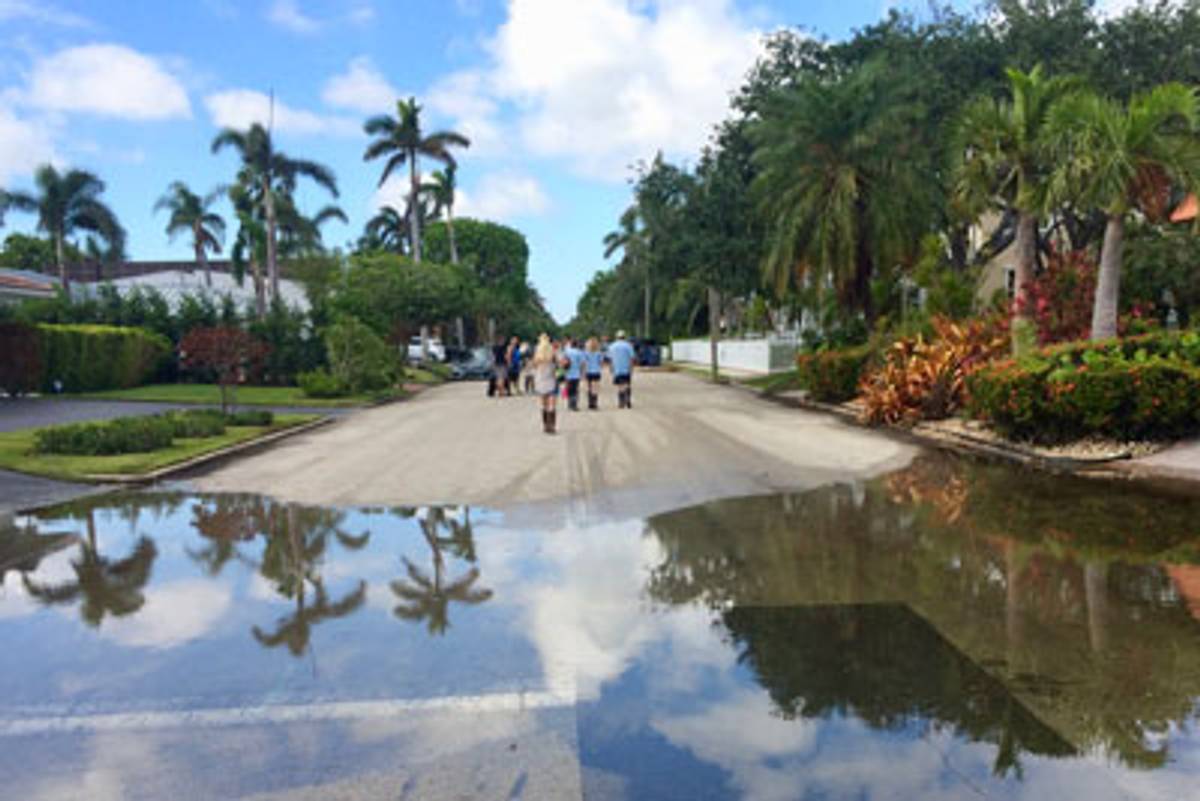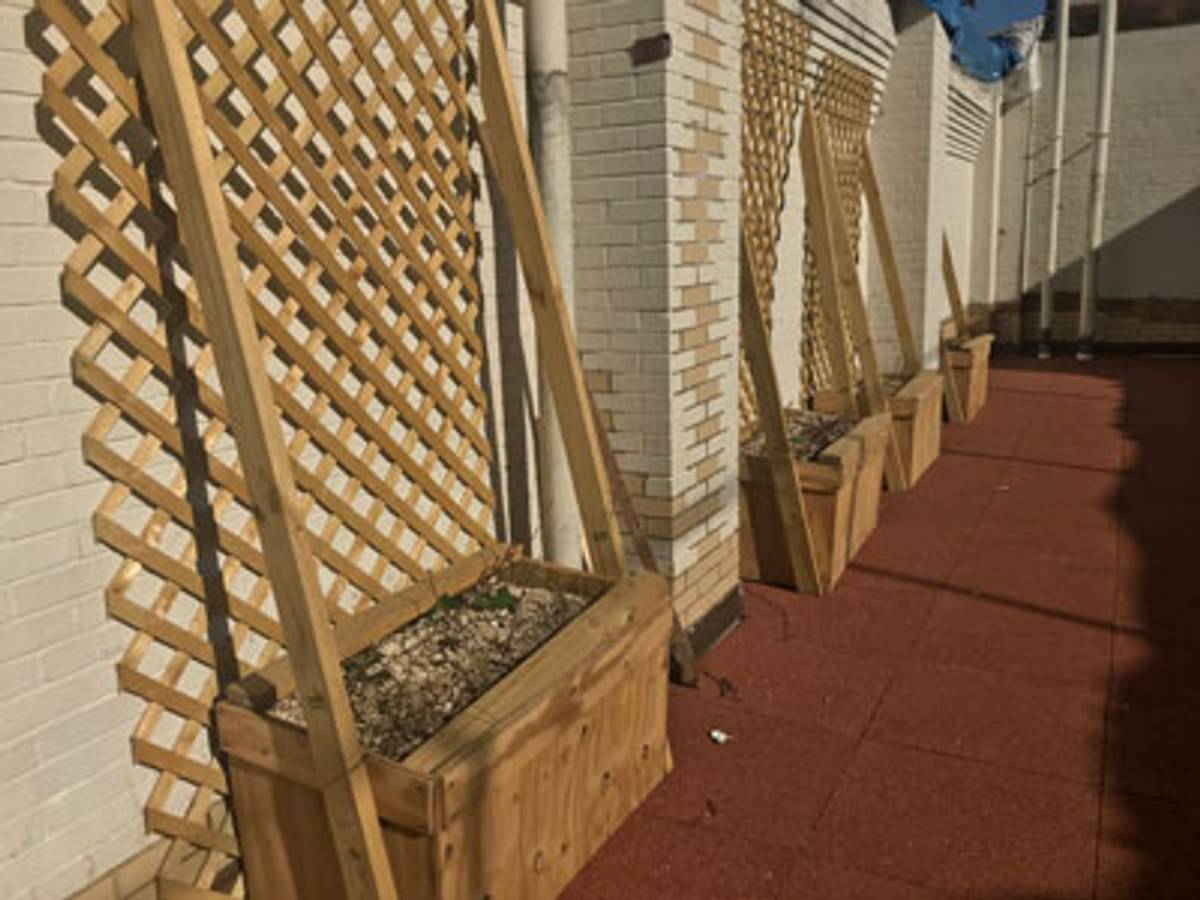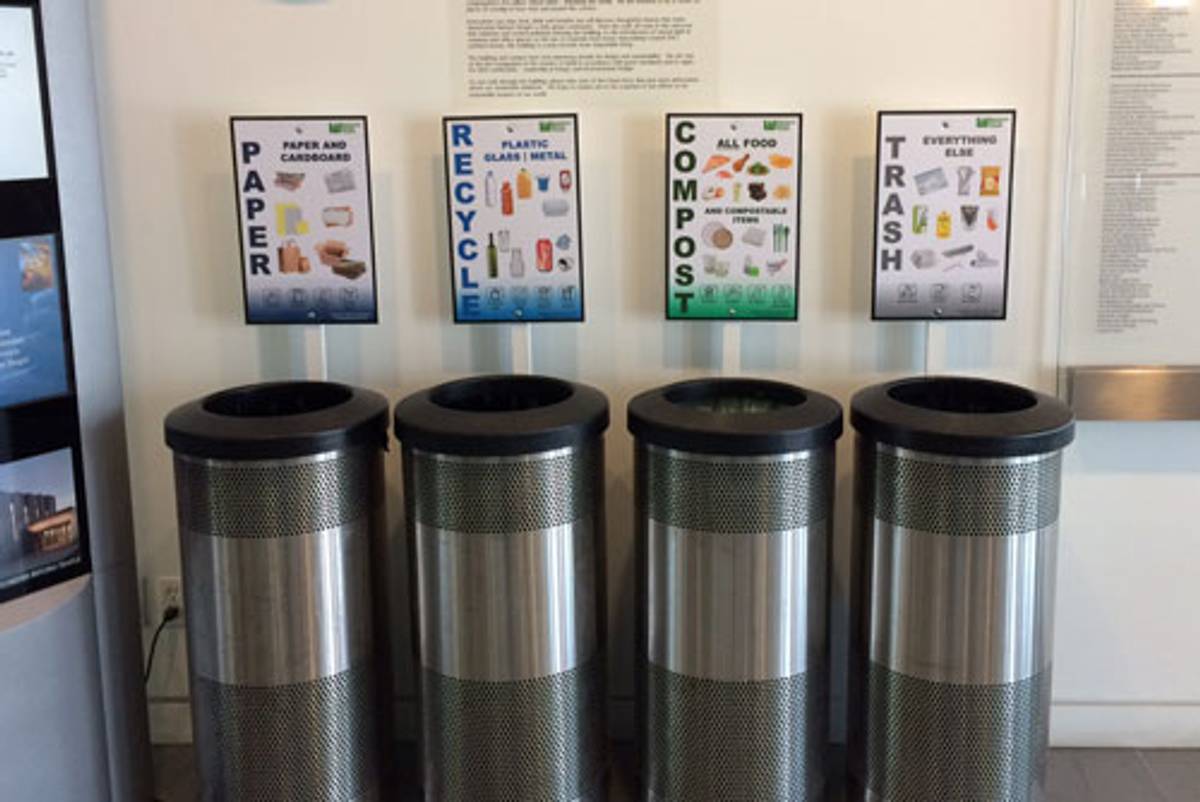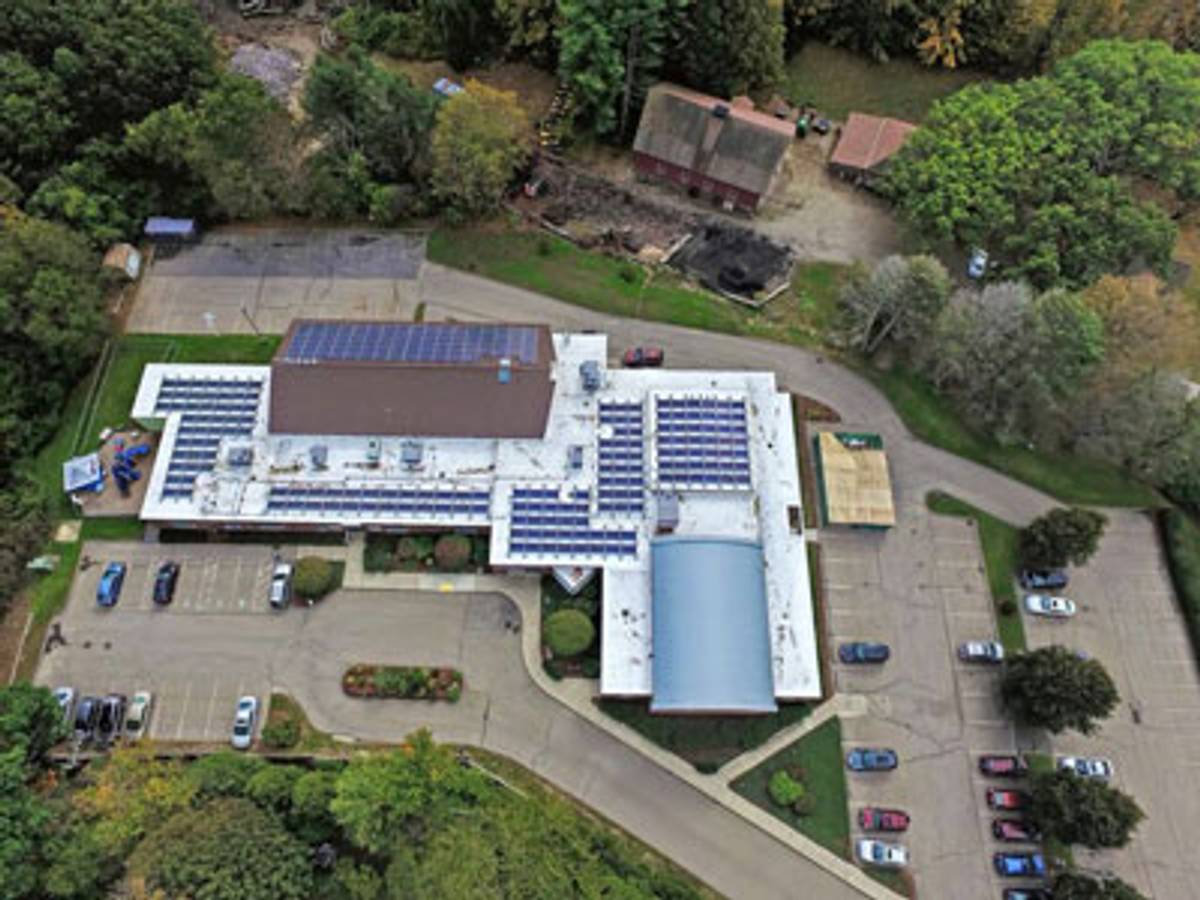Making Synagogues Sustainable
Congregations around the country have found ways to protect the environment and combat the effects of climate change




In Florida, synagogues are combating the effects of rising sea levels, high tides, and tropical storms. In California, they are conserving water in the aftermath of years of drought and water shortages. In New York, they are working to eliminate greenhouse gases and toxic waste. And in Massachusetts, they are reducing energy consumption and dependency on fossil fuels.
Synagogues are taking seriously their religious obligation to be stewards of the Earth, and fulfill the biblical commandment known as bal tashchit, not to destroy the environment (Deuteronomy 20:19–20). They have implemented a variety of new sustainability initiatives to mitigate the effects of global climate change and prevent future damage caused by extreme temperatures and carbon emissions.
“If you care about Judaism, you need to also care about the planet. Jewish sustainability is part of making sure that there is a world for the next generation,” said Rachel Aronson, manager of sustainability and community engagement at Hazon, which works to build sustainable communities. She sees the recent uptick in synagogue sustainability initiatives as a way to enable environmental change at the local level while connecting young people with Judaism.
Coastal communities across the U.S.—home to 40 percent of the U.S. population—have already experienced the impact of atmospheric warming, such as increased sea-level rise and King Tides, which result from a particular alignment of the Earth, sun, and moon.

With millions of Floridians actively threatened by sea-level rise and King Tides, Temple Solel of Hollywood, Florida, has shored up its response. “We are looking at significant issues with street flooding because of the sea-level rise. People in Hollywood have trouble getting out of their homes,” explained Scott Lewis, co-chair of the 700-family Reform congregation’s Tikkun Olam Committee. “Floods are now 3 feet above sea level, and we’re getting close to the point where the canals can’t handle the water flow.”
Since hosting its first communitywide educational event, “Matzah Won’t Rise But the Sea Will” in spring 2016, Temple Solel continues to lead action on sea-level rise, with such initiatives as the Sea Level Rise Solutions Program, a local community-based organization that holds monthly strategy sessions; annual fall tours of local King Tide flooding areas; and the Higher Ground Initiative Committee, which engages Reform rabbis, educators, and lay leaders across North America and abroad in monthly conference calls. Temple Solel also participates in the Broward County Youth Environmental Alliance dune-restoration project, which plants sea oats on Hollywood Beach to minimize storm damage and erosion.
In December 2017, the plenary of the biennial of the Union for Reform Judaism approved by acclamation Temple Solel’s resolution on climate change. “Once you start raising those issues, you will find that others have the same concern,” said Lewis. “There are many resources so that you can make those connections in the community as well.”
As a response to the multiyear California drought and the state’s efforts to reduce water usage, Congregation Emanu-El, a 2,100-family Reform congregation in San Francisco, is focusing environmental efforts on water conservation and is now upgrading bathrooms in its 93-year-old building with water-efficient features.
The synagogue is working closely on this project with the city of San Francisco, which has passed a water-saving ordinance for large buildings. It hopes to become the first house of worship to receive San Francisco’s Green Business Certification, matching the city’s broader greening efforts while fulfilling the Jewish mandate to repair the world.
“While Northern California has a larger reserve of water compared to Southern California, we are still consuming more water as a state than will be replenished even in a good rain year,” said Lara Ettinger, chair of the synagogue’s Tzedek Council environmental working group. “This will ensure we use only what is necessary and will help make sure there is enough water for all Californians.”

In New York City, nonaffiliated Congregation B’nai Jeshurun is realizing its goal to become an eco-conscious community, “green” its space, and reduce its carbon footprint. This March, after months of hands-on work by BJ community members, a significant milestone was achieved: the completion of a “living green roof”—a wooden-lattice “green living wall” with vines and tubs containing organic soil—on the sixth-floor rooftop terrace of its Upper West Side Manhattan Community House. This “green” beautification project will also incorporate the use of sensors that measure heat flow as a way to improve air quality and heat efficiency.
“We want to be a model for a sustainable community,” said Larissa Wohl, BJ Tzedek program manager. “One of the biggest benefits is the active participation of the community with practices that they can bring home.”
Over the past few years, since joining the Hazon Seal of Sustainability Program in 2016, BJ has expanded its sustainability initiatives. For example, by introducing “Green Kiddushim,” BJ has replaced thousands of disposable paper plates, single-use tablecloths, and plastic cutlery used annually with reusable tablecloths, silverware, and dishware. Different types of waste are separated into color-coded bins.
A participant in the New York City composting initiative since 2015, BJ’s sustainability reach now extends to the local Upper West Side community. Each week, congregants and local residents fill nearly 170 gallons or eight 21-gallon bins for composting, thus diverting landfill waste and helping New York City reach its goal of zero-waste by 2030.
Indeed, for some congregations, zero-waste—the elimination of trash for landfills—has become a priority climate-change strategy. It’s an easy way to reduce greenhouse-gas emissions and is a “green” alternative for the disposal of trash from life cycle events, kiddushim, and other activities generating food, paper, and plastic waste.

As the first zero-waste house of worship in Westchester County, Westchester Reform Temple of Scarsdale, New York, has become a model for area faith-based organizations. The 1,200-family Reform congregation—whose building was constructed in accordance with green standards and received LEED (Leadership in Energy and Environmental Design) certification—avoids producing any landfill waste through synagogue activities. It uses durable or compostable serve-ware, composts all food scraps, and recycles everything else.
“The goal is to change the mind-set of people that trash is not trash but is a resource,” said Michelle Sterling, zero-waste-committee co-chair. “If we all do something, we can make a difference.”
For environmentally conscious congregations, reducing energy consumption is a way to reduce their carbon footprint while also saving costs and improving building efficiency.

Case in point: In October 2017, Temple Aliyah, a 430-family Conservative synagogue in Needham, Massachusetts, installed an 83-kilowatt solar array on its roof that is designed to provide 90 percent of the synagogue’s yearly consumption. During the months of October and November, the solar panels produced nearly 10 megawatt-hours of power, which nearly offset consumption. The project has also become an opportunity to educate the congregation, including school children, about clean energy and solar power.
“It’s very nice when you can do something for the environment and also the right thing for the organization,” said Fred Borgenicht, vice president of operations and the lay leader who led this mammoth two-year planning effort.
By using renewable solar energy, Temple Aliyah has significantly reduced its environmental footprint, decreased dependence on fossil fuels, and cut electricity costs, with anticipated energy cost savings of $200,000 over 20 years.
More and more congregations are going solar, according to David Bernat, executive director of the Synagogue Council of Massachusetts, which is co-sponsoring an informational seminar, “Going Solar: Sustainable Synagogues,” with the Jewish Climate Action Network in May.
Some congregations are “going green” with specific projects. Others have formed Green Teams to effect systemic change, such as at Temple Israel of Boston, a 1,300-family Reform congregation founded in 1854.
“The Temple Israel Green Team has had the good fortune of working closely with the executive director, clergy, building and grounds committee, and facilities staff,” said Joan Rachlin, Green Team founder and chair. “Each of our partners shares our belief that climate-change mitigation is both a biblical and moral imperative for Jews.”
Temple Israel’s comprehensive sustainability approach incorporates educational programming and hands-on work such as the use of certified green energy purchased from a wind farm in Texas; recycling and composting; and a community-supported agriculture (CSA) project.
A participant in the Green Faith Energy Shield certification program, Temple Israel has now replaced more than 1,400 lights and fixtures in its more than 90-year-old, 100,000-square-foot building with energy-efficient and long-lasting LED technology. Customized, computer-controlled motion sensors automatically sense and shut off lights to conserve electricity in unoccupied rooms. By the end of 2018, the synagogue plans to replace the remaining bulbs in the chapel and 900-seat sanctuary with energy-efficient lighting—for an estimated 25 percent reduction in electricity usage.
Among the newest initiatives: a “mitzvah lights” campaign that encourages congregants to use energy-efficient lighting; an “anti-idling” campaign that discourages vehicle-idling while waiting to pick up religious school students; and in fall 2018, Temple Israel plans to launch a “Green Bar/Bat Mitzvah” program to raise consciousness among bar/bat mitzvah families for environmental service mitzvah projects, support for environmental organizations, and “green” celebrations.
In any case, there’s no single approach to get started. Some synagogues choose to partner with environmental organizations such as Hazon, the Jewish Climate Network, or Green Faith. Sometimes environmentally-conscious congregants initiate specific projects. And others, like Adas Israel Congregation, the largest Conservative synagogue in Washington, D.C., begin by studying Jewish texts related to the environment, following the Talmudic dictum that study leads to action (Bava Kama 17a).
The actual approach is likely to vary by community interests. “The first step is to start the conversation,” suggested Rabbi Katy Allen, president and founder of the Jewish Climate Action Network. “Bring together a group of people and start talking about what can be done within the synagogue.”
***
Like this article? Sign up for our Daily Digest to get Tablet Magazine’s new content in your inbox each morning.
Paula Jacobs is a writer in the Boston area.